Whether you’re towing a micro camper or driving a large diesel motorhome, you might need more storage space than your RV provides. Some gear simply doesn’t belong inside or underneath your RV too, which is why RV cargo carriers are so useful.
Types of RV Cargo Carriers
Let’s look at the most common cargo carriers for your RV:
Hitch-Mounted RV Cargo Carrier
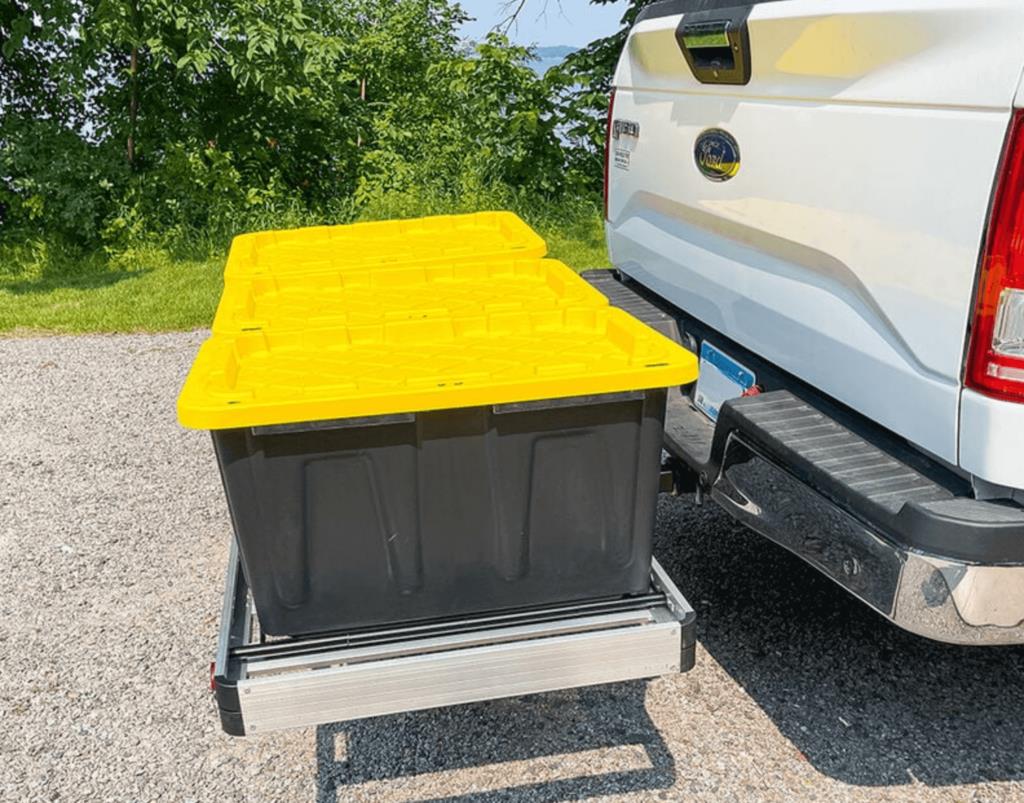
Photo by Camping World
Hitch-mounted cargo carriers are easy to install and easy to use. They are the most common and require a compatible hitch receiver and pin to secure to your RV.
This category includes flat cargo carriers, enclosed cargo boxes, cargo cages, hitch-n-go cargo carts, and more. There are also accessories to weatherproof this type of carrier, like this cargo carrier bag.
Tongue-Mounted RV Cargo Carriers
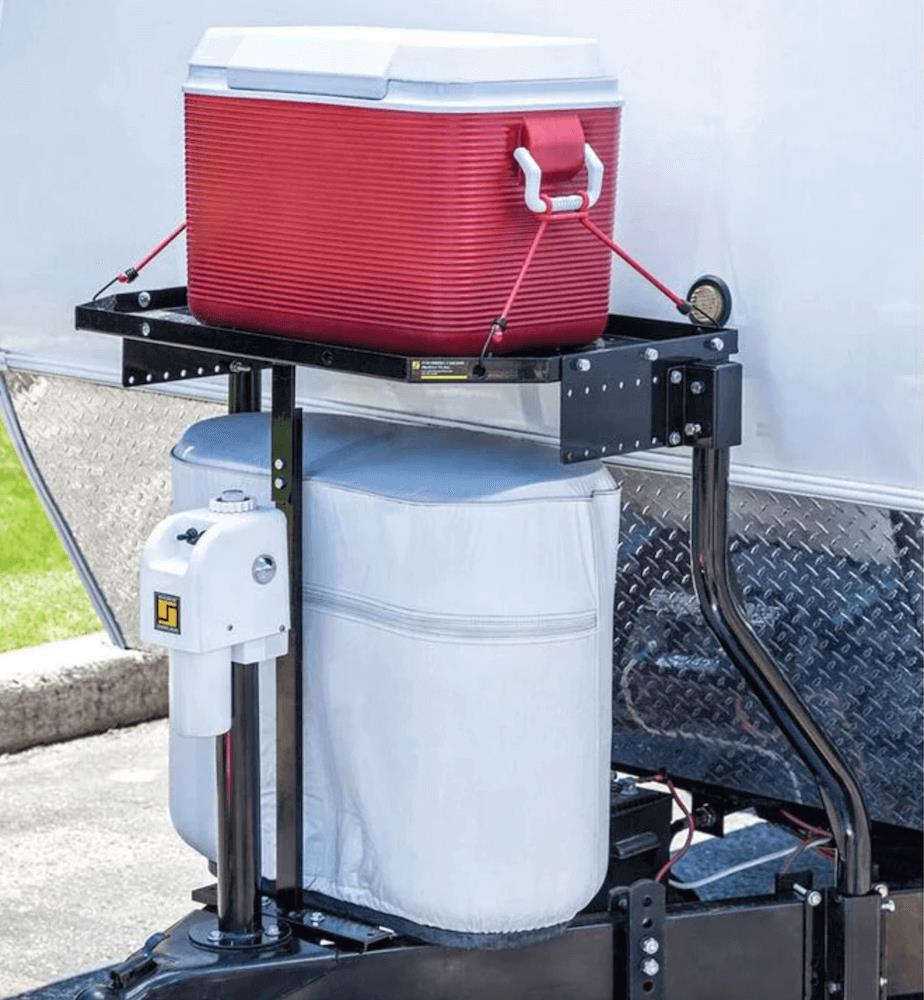
Photo by Camping World
This style is typically only used on A-Frame travel trailers. Most styles create a platform above the trailer’s propane container storage area. This style generally secures larger cargo items like coolers, portable generators, and air compressors.
RV Cargo Carrier for your Bumper
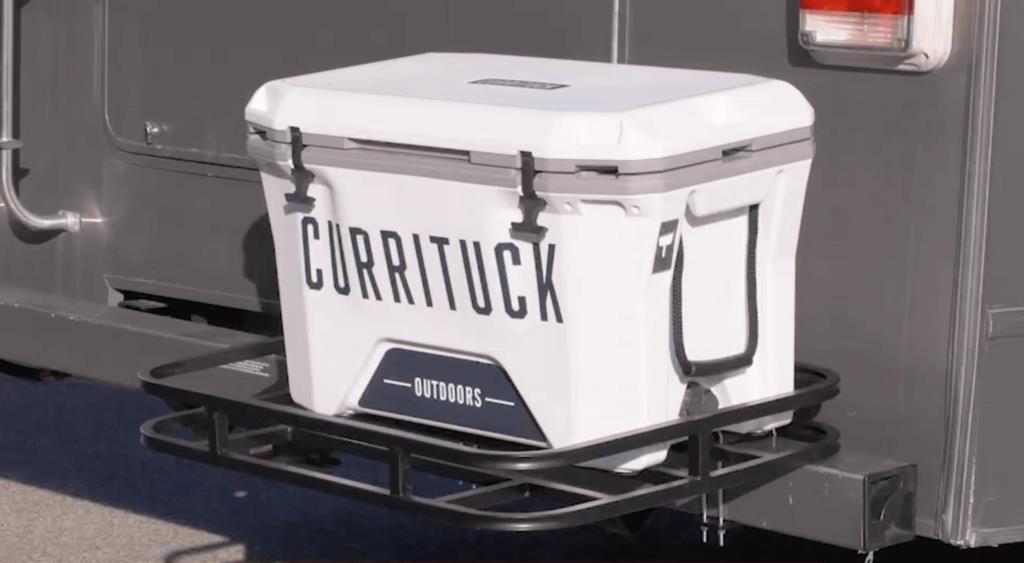
Photo by Camco
Also known as bumper racks, this style bolts directly to your RV’s rear bumper. This style is useful for RVs not equipped with a hitch receiver from the manufacturer. They require a more involved installation, but most offer the same performance and durability as hitch-mounted carriers.
Roof-Mounted RV Cargo Carrier

Photo by Camping World
Roof-mounted cargo carriers are another solution for your tow vehicle or small campers like the Coleman Rubicon 1200RK or Forest River NoBo 10.6. Some require compatible roof crossbars, but others are simply weatherproof cargo bags you can strap directly to the roof of your small camper or tow vehicle.
This category also includes racks specific to certain recreation equipment, such as bike racks and carriers for kayaks and paddleboards.
Shop Camping World’s complete selection of RV cargo carriers.
How to Choose an RV Cargo Carrier
Now that you’re familiar with the various types of cargo carriers, here are some tips to help you choose the right design for your RV:
Where Will You Mount It?
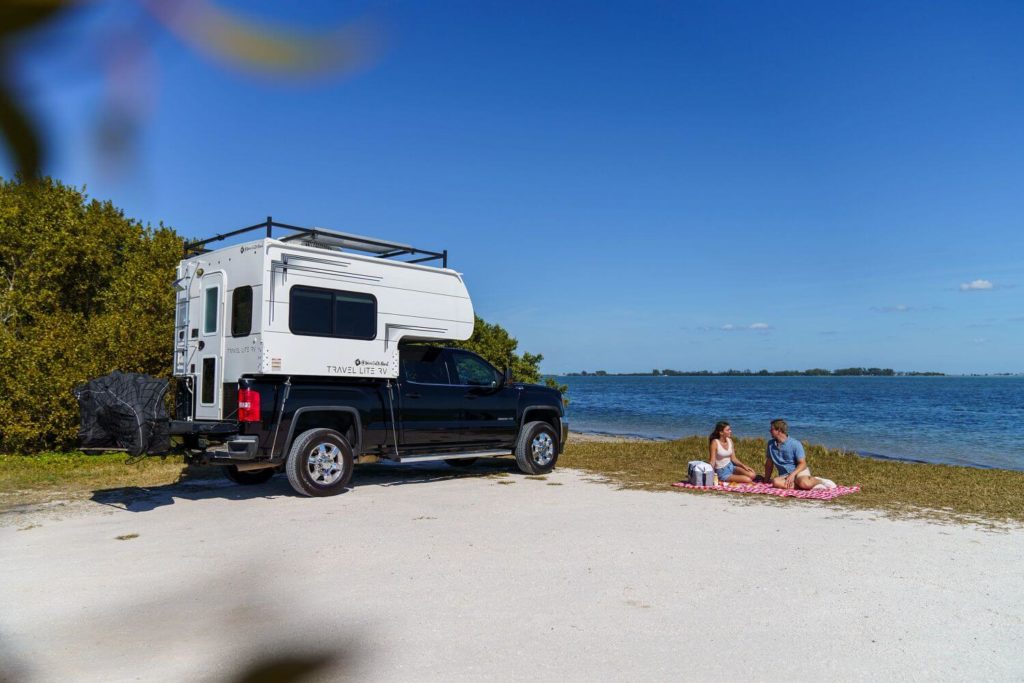
Photo by Camping World
The ideal mounting location for your cargo carrier depends on your RV’s design.
You probably want a hitch-mounted cargo carrier if:
- Your RV has a hitch receiver that’s not being used for towing.
- You want to maintain easy access to tongue-mounted propane containers.
You probably want a bumper-mounted cargo carrier if:
- Your RV isn’t equipped with a hitch receiver.
You probably want a tongue-mounted cargo carrier if:
- You have a toy hauler or a travel trailer with a rear entry door.
- Your tow vehicle can handle the added tongue weight.
You probably want a roof-mounted cargo carrier if:
- Your hitch receiver is already in use (for towing or cargo).
- You want to maintain access to your trailer’s tongue.
- You have compatible crossbars on your tow vehicle.
- You need storage for the gear you’ll use once you drop your RV at a campsite.
What Will You Carry?

Photo by Camping World
The types of camping gear or recreation equipment you intend to carry should guide your choice of a platform cargo carrier, enclosed cargo box, cargo basket, or cargo cart.
Platforms are best for larger items that are easy to strap down with heavy-duty tie-down straps.
Enclosed cargo boxes are best for any gear you don’t want to be exposed to the elements.
Cargo baskets are best for multiple small items that aren’t easy to secure on an open platform.
Cargo carts are best if you know you’ll need to transport gear a considerable distance in camp (such as from your campsite down to the beach).
How Much Will You Carry?
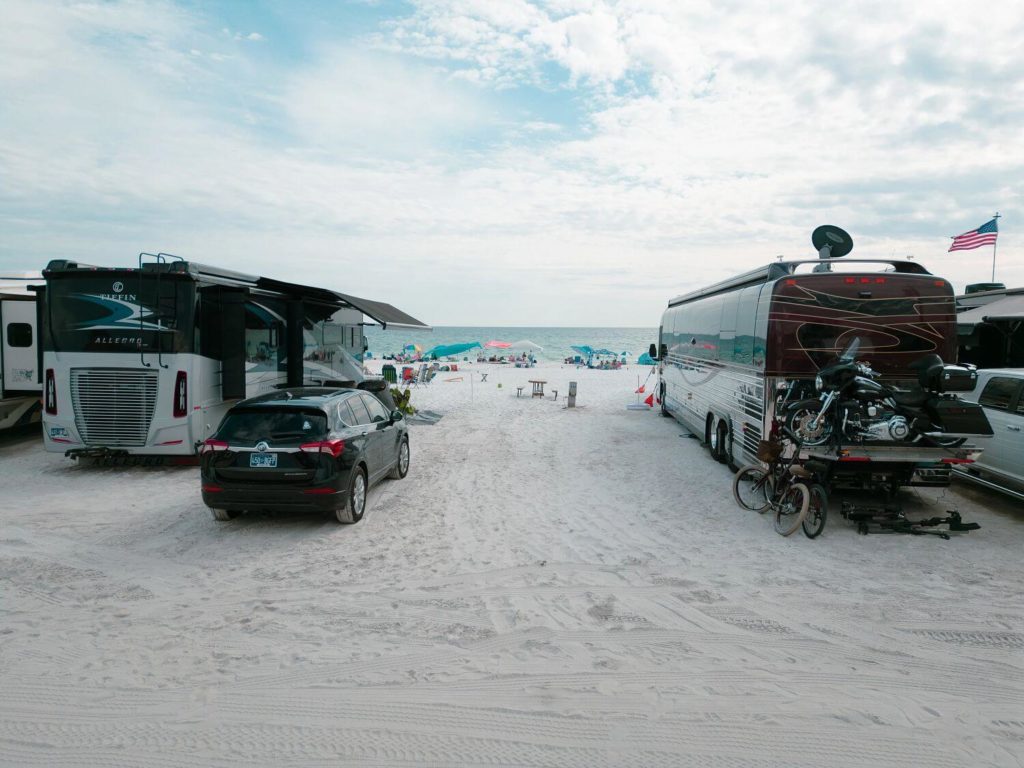
Photo by Camping World
Beyond the mounting hardware and cargo carrier design, look closely at the weight capacity of the models you’re interested in. Ensure the carrier you choose can handle the combined weight of the items you plan to transport in it.
How to Install an RV Cargo Carrier
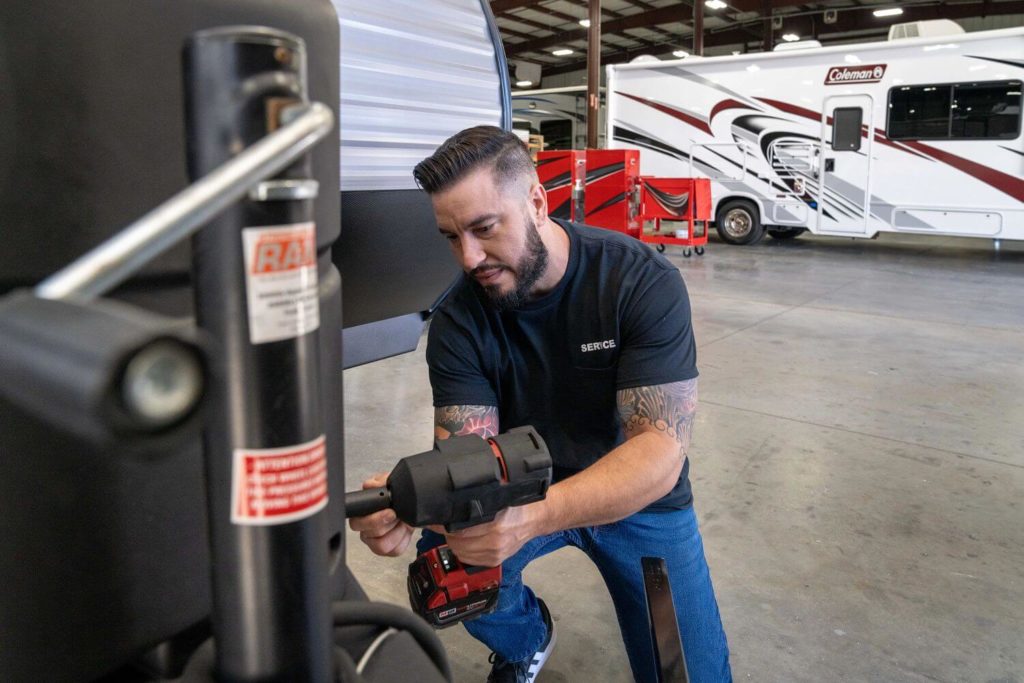
Photo by Camping World
Depending on the make and model you get, you’ll need to follow the manufacturer’s installation instructions. But here are a few tips for securing a cargo carrier for your RV:
- Use a locking hitch pin. This is the best way to ensure the carrier’s security and contents for hitch-mounted carriers.
- Ensure accessibility. Ensure you don’t install your carrier where it will impede your ability to access parts of your RV, such as entry or compartment doors, propane storage area, or spare tire.
- Check it frequently. Check your cargo carrier’s hitch pin and/or mounting hardware before each trip. Add it to your pre-trip RV checklist.
The Best Cargo Carrier for an RV
Here are two of the most popular RV cargo carriers:
Stromberg Carlson Hitch-Mounted Cargo Carrier
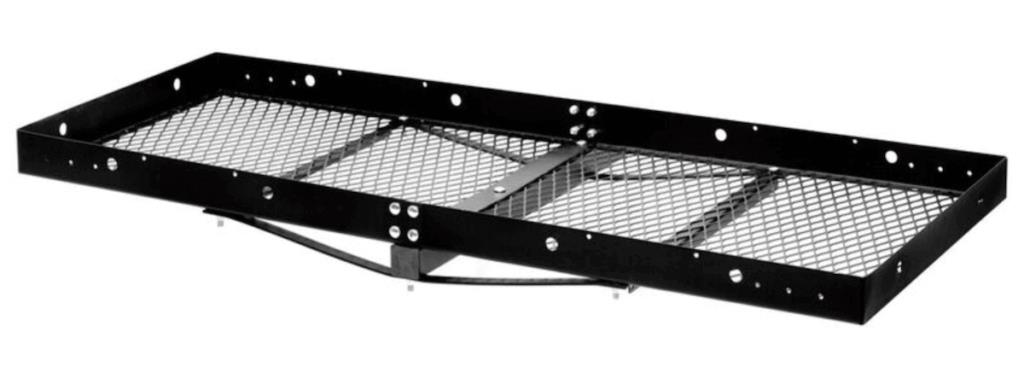
Photo by Camping World
- Fit: 2” Class III and IV hitch receivers
- Weight: 40 pounds
- Weight Capacity: Up to 500 pounds.
This is the easiest way to add exterior storage space if your RV has a compatible hitch receiver. You’ll need tie-downs to strap everything down securely, but this platform has the ability to hold significant weight.
Of course, the caveat is understanding how to load your RV safely so that weight is evenly distributed. This is essential for safe towing and helps maximize your fuel economy.
The platform measures 60” long by 23” wide and is powder-coated to resist rust and corrosion. It’s also designed to allow water to drain and includes built-in tie-down holes for easily securing your cargo.
Shop this RV cargo carrier.
Stromberg Carlson Trailer Tray A-Frame Cargo Carrier
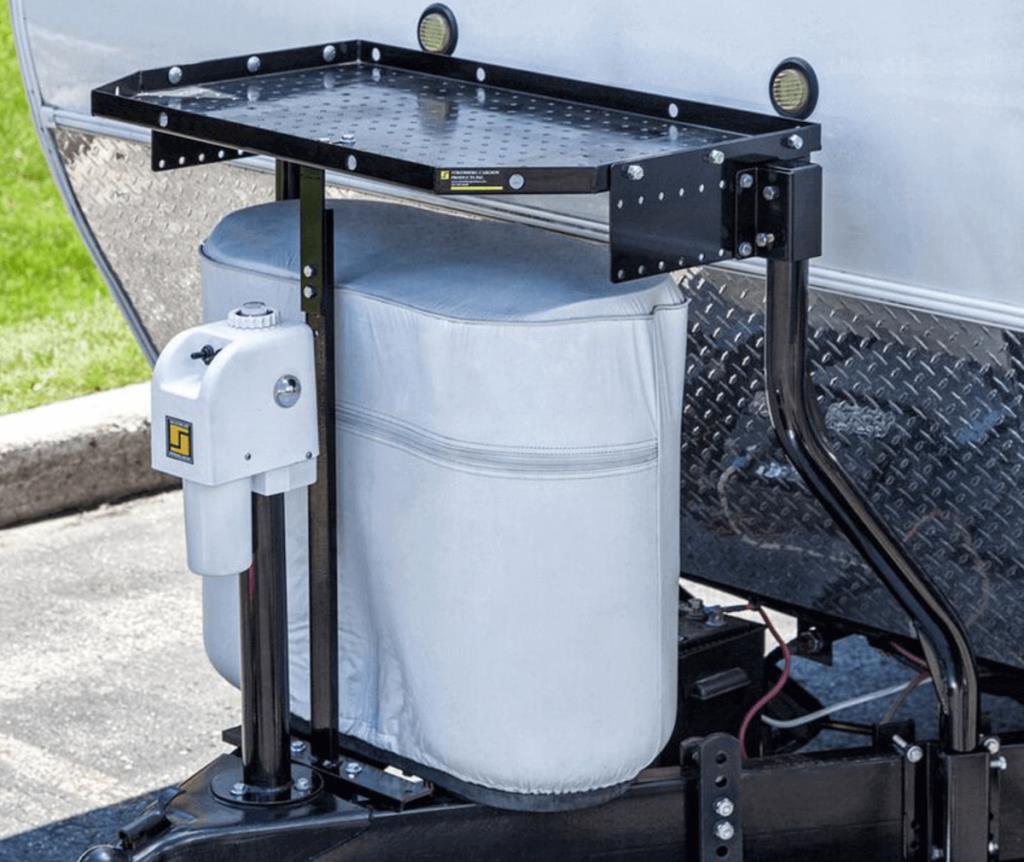
Photo by Camping World
- Fit: Most A-Frame trailers with up to 30-pound propane tanks
- Weight: 63.1 pounds
- Weight Capacity: Up to 300 pounds.
Some trailers have a rear entry door restricting your ability to add a hitch or bumper-mounted cargo carrier. Or maybe you already have one of those carriers and still need extra storage.
That’s where an A-frame cargo carrier that mounts on your trailer’s tongue comes in handy. This model has a distance of roughly 29.5 inches from your trailer’s frame to the bottom of the tray and accommodates mounting widths from 14 to 55 inches.
Once installed, it’s durable enough to mount larger RV accessories like a portable generator, an air compressor, or even large tools. But it works fine for smaller items like camping chairs, a small portable RV tote tank, or cargo boxes.
The only downside is that you may need to modify your propane container covers to maintain access to the valves and regulator controls. You’ll also need to remove the tray or leave the cover off to maintain access to your propane containers for refilling.
Check the price of this RV cargo carrier.
Cargo carriers are an excellent way to add storage space to your RV without breaking the bank. Speaking of storage, here are a few more resources to help you maximize the space in your RV:
- 10 Storage Ideas for your RV Bathroom
- Tips for Making the Most of Food Storage Space in a Small RV
- Maximizing RV Counter Space with a DIY Stove Cover
What do you need an RV cargo carrier for? Tell us in the comments below.
The post Camping World’s Guide to RV Cargo Carriers appeared first on Camping World Blog.
By: Tucker Ballister
Title: Camping World’s Guide to RV Cargo Carriers
Sourced From: blog.campingworld.com/gear-and-accessories/camping-worlds-guide-to-rv-cargo-carriers/
Published Date: Fri, 21 Apr 2023 09:00:00 +0000
---------------------------------------------
Did you miss our previous article...
https://outdoorsnewswire.com/camping/what-does-a-motorhome-fuel-filter-do
 CampingSurvivalistHuntingFishingExploringHikingPrivacy PolicyTerms And Conditions
CampingSurvivalistHuntingFishingExploringHikingPrivacy PolicyTerms And Conditions
